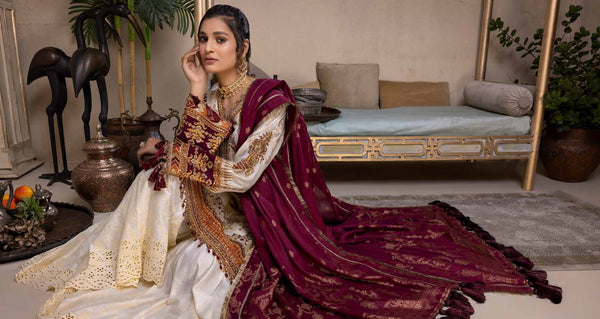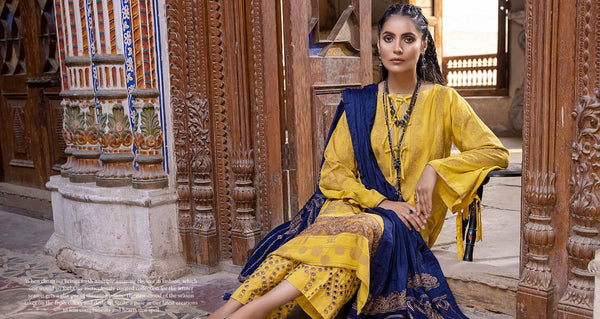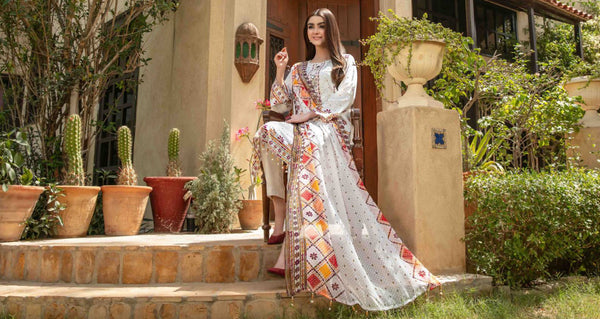History of Indian Clothing Through The Decades
Looking back at how Indian dresses have evolved, one can’t but wonder how the colorful and diverse fashion here has originated through decades and centuries.
For Indians though, dresses were more than just garments to cover the body.
Along with covering what needs to be covered, Indian dresses served as symbols of culture, prestige, and social status.
Today, the Indian fashion industry employs about 100 million people directly or indirectly and is expected to be worth $190 billion by 2026, according to Statista.
In this post though, we describe the rich and colorful history of these Indian dresses from the beginning till now focusing on the key moments in history that influenced how Indian women have dressed over time.
Indus Valley Civilization Era - In the Beginning
The history of Indian fashion and the world (to a large extent) began during the Indus Valley Civilization era. India was one of the earliest pioneers of cotton cultivation which the people began to grow and use during the Harappan era around 2500 BCE.
From the evidence uncovered from the discoveries of seals and figurines excavations, it could be seen that minimalism defined the state of fashion during the Indus Valley Civilisation. Men of that era often draped an unstitched piece of cloth around their bodies. The men wore turbans, possibly due to the heat, and wore a piece of cloth around their waist that somehow resembles a modern-day dhoti.
From some of the discoveries that represented this era in history, nudity appears to be prevalent as seen in certain statues where women were often depicted in knee-length skirts leaving their upper body bare. So, it can be concluded that Indian dresses during the Indus Civilisation era were mainly to accentuate attributes of the body rather than cover it.
Certain representations, however, pointed to the possibility of certain privileged members of that society often wearing dresses that cover some of their upper body areas. Men and women of this era wore jewels and accessories from bangles to necklaces, earrings, armlets, anklets, belts, etc. The dyeing of cotton also began during this era with the major fabrics of that time being cotton and silk.
Indian Dresses & Vedic Period Fashion
The Vedic era describes a period in history between 1500 – c. to 500 B.C.E when the Vedas, Hinduism's oldest sacred texts came into being. Most of the Vedic civilizations were more concentrated and well-pronounced in the northern and northwestern regions of India.
Indian dresses during the Vedic era built on the landmark developments of the Indus civilization era. Probably because of the prevailing weather condition, single pieces of unstitched Indian clothing described Indian dresses during that era.
The antariya and uttariya were two of the most prominent fashion items of the Vedic era worn by people of both sexes. The antariya was more like a loincloth that people wore around the waist. They are also worn between the legs and often tucked behind the back. This ranged in length from thigh to ankle.
The uttariya, on the other hand, was worn loosely around the body. It was worn either diagonally across the shoulder or loosely across the back, like a dupatta. The antariya was often held in place using the kayabandh, a belt. And while sewing dresses was not a thing during this era, embellishing dresses with threads of gold and silver started during this time in history.
Indian Dresses In the Post-Vedic Era of Dynasties
The post-Vedic era ushered in the creation of new kingdoms and dynasties, many of which impacted the way women and men dressed during that era. Indian fashion also experienced some sort of external influence in the form of Greco-Roman fashion.
Depending on who you listen to, some historians believe the saree was a product of Roman influence while some believe it came to be after sewing and stitching became something. Kushan dynasties popularized the use of cut and sewn dresses from draped garments.
The Chandragupta Maurya and the Sunga dynasties also popularized the use of breast brands which signaled the beginning of the gradual shift from topless fashion. Even then, the showing of breasts was commonplace as dresses were mostly designed to accentuate and elaborate the female body attributes in the most comfortable way possible.
Antariya and uttariya, as well as some of the other fashion pieces of that era also changed, thanks to the external influence. Women began wearing the antariya as a lehenga in kaccha style. The Guptas also popularized the use of a heavily-gathered skirt known as the Ghagri. Hairdo became an important part of fashion and Henna, (reddened dyes) started being used to dye palms and soles of the feet.
Mughal Fashion Influence On Indian Dresses
Can any history of Indian dresses be complete without a mention of the colorful and beautiful influence of the Mughal empire kings? Not possible!
Indian fashion moved from minimalism to maximalism during this era.
While the Rajput and Maratha royals inspired the saree and ghagra revolutions, the Mughal empire introduced the Salwar Kameez and Anarkali dresses, among others.
The legendary Mughal Empire King Akbar encouraged a fusion of Hindu and Muslim fashion and culture. He was often seen wearing long kurta jackets of sherwani designs along with a simple turban with gemstones. His pearl strings, heavy rings, and embellished waistbands, among others, also described the royal status of Akbar and his peers.
Akbar’s Rajput wife, Queen Jodha was often seen wearing elaborate lehenga choli dresses while Anarkali dresses were popularized by the courtesans who often came to entertain the royals within Mughal palaces. The Mughals, more like the other prominent royal dynasties of that era left their mark on Indian fashion in a way that is still evident today.
Colonial Era Fashion in India
The British, as well as the Europeans, were drawn to the rich textiles of India during the pre-colonial era fashion. Exportation of fabric products from calico to cashmere, among others, became popularized even more, during this era.
While the Europeans were initially embracing the fashion culture of this new and different tropical weather, everything changed when the East India Company took over India and colonization began.
- Local customs and costumes began being frowned upon as the people were being forced to accept a new way of life.
- Frilled skirts and embroidered gowns began replacing sarees and ghagras; petticoats and long and mid-sleeve blouses began being worn under the saree at this moment as the British Raj frowned upon nude fashion and deemed it primitive.
- Shirts, trousers, and suits began being worn by men. Things, however, began changing during the pre and post-independence period.
These moments, however, saw a great blending of East and Western fashion that gave rise to the prevalence of Indo-western elements common in Indian fashion till today.
How Bollywood Continues To Influence Modern Era Indian Fashion
The British Raj officially ended in August 1947.
The quest for self-sustainability and self-determination was reflected in every aspect of Indian life from the government to fashion and lifestyle. Now that the British are gone, the new custodian of the culture is the women and girls as well as men and boys who entertain the people on TV.
India’s new generation designers became very creative and continue to dish out new designs of dresses that continue to wow the people. The men and women of Bollywood are, however, the conduit through which most of these dresses are introduced to the public.

Indian Lehenga in a large flared style
Actors, models, musicians, and entertainers continue to wield a great influence on today’s Indian fashion scene. Today’s fashion, however, is a result of the constant evolution of fashion in India through the years. It keeps evolving and it’s beautiful to watch!






